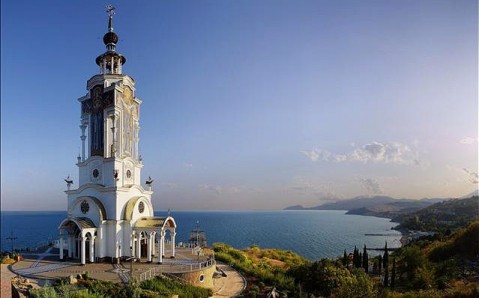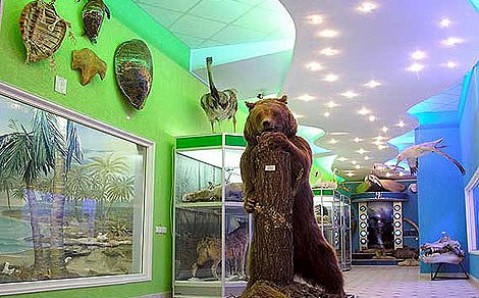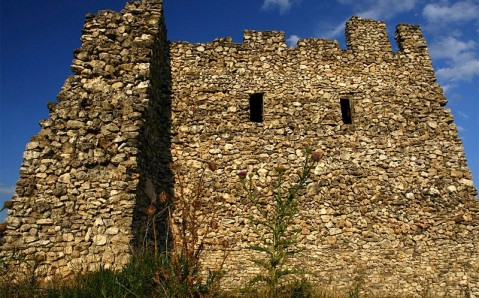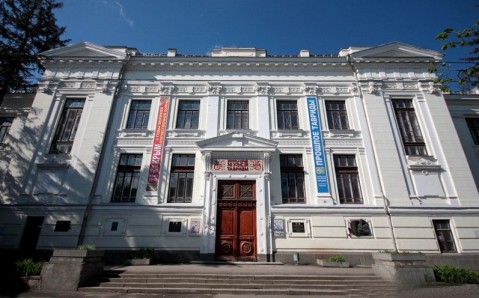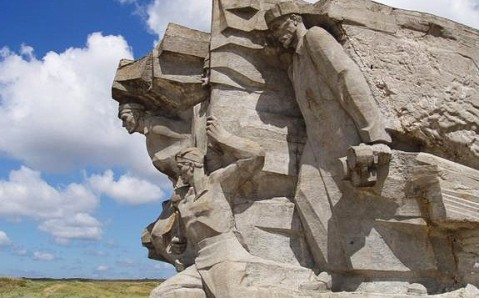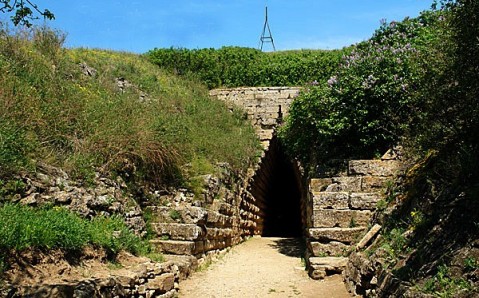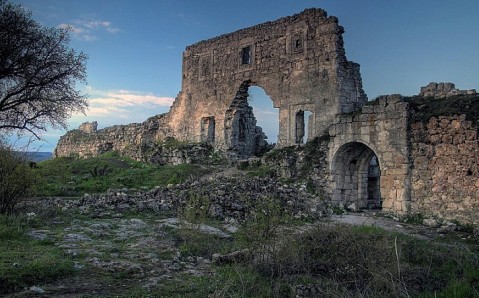The Sea Crashes Museum
•
Alushta (84 km.)
The Sea Crashes Museum
•
Alushta (84 km.)
The unique Sea Crashes Museum that was created several years ago in Malorechenskoye village near Alushta has already become one of the most attractive sights on the Southern Coast of Crimea. It's the only museum in the world that is devoted to the most famous sea tragedies. It is located in the building of very beautiful St. Nicolas Lighthouse Temple. Together they build up a memorial complex to
Nature Museum and Arboretum and Zoo Park of the Crimean Nature Reserve
•
Alushta (70 km.)
Nature Museum and Arboretum and Zoo Park of the Crimean Nature Reserve
•
Alushta (70 km.)
You don't have to subjugate Crimean Mountains, go down in caves and work your way through dick forests, in order to closer familiarize yourself with Crimean peninsula's inimitable nature, be amazed with its richness and diversity. It's enough, if you visit the Nature Museum and the Arboretum and Zoo Park, created on the Crimean National Nature Reserve's territory.
Created in 1923, Crimea's largest
The Scythian Naples
•
Simferopol (64 km.)
The Scythian Naples
•
Simferopol (64 km.)
Situated in Simferopol's outskirts, the Scythian Naples is an archeological monument of world's significance that is recognized as one of the seven wonders of Crimea's capital. This is ancient town's ruins, on the territory of which the namesake historical and archeological complex was created.
Founded in the 3d century B.C., the Scythian Naples remained the capital of the ancient Late Scythian st
The Central Museum of Tavrida
•
Simferopol (62 km.)
The Central Museum of Tavrida
•
Simferopol (62 km.)
The best chance to learn about Crimea's centuries-old history, its inimitable nature and peculiar culture is to visit the Central Museum of Tavrida in Simferopol - one of Crimea's largest and most interesting museums. Its extensive collection includes unique archeological findings (Stone Age settlements, Copper and Bronze Age burial vaults and many other) objects of decorative and applied arts, va
The History of the Defense of the Adzhimushkay Quarry Museum
•
Kerch (253 km.)
The History of the Defense of the Adzhimushkay Quarry Museum
•
Kerch (253 km.)
Situated in the Kerch's outskirts, Adzhimushkay Quarries are mine workings that form complex labyrinth with divided underground galleries, tunnels and corridors. Now it is a unique military and historical monument that immortalized courage of Soviet soldiers, who during the Second World War held the line against German invaders here.
In spring of 1942, enemy troops invaded Kerch Peninsula's terri
Historical and Archeological Museum (Museum of Antiquity)
•
Kerch (247 km.)
Historical and Archeological Museum (Museum of Antiquity)
•
Kerch (247 km.)
Kerch's Historical and Archeological Museum is one of Ukraine's oldest museums and has one of the largest collections of unique exhibits from different ages. Therefore, it rightly occupies one of the leading places among Kerch Peninsula's attractions.
The Museum of Antiquity - its initial name - was founded in 1826. Due to Kerch's century long and incredibly rich history, at that time its main mis
Mount Mithridat
•
Kerch (248 km.)
Mount Mithridat
•
Kerch (248 km.)
Mount Mithridat towers above the town for almost one hundred meters and is rightly considered to be Kerch’s main tourist attraction and its imperishable symbol. Different historical and cultural epochs interweaved in this wonderful place and left their landmarks in form of unique monuments on the mountain's slopes and at its foot.
Almost 26 centuries ago one of the most ancient European towns Pant
Tsar's Burial Mound (Tsarskiy Kurghan)
•
Kerch (252 km.)
Tsar's Burial Mound (Tsarskiy Kurghan)
•
Kerch (252 km.)
The Kerch Peninsula was always famous for multitude of ancient burial mounds, however, the Tsar's Burial Mound rightly bears a title of one of the most mysterious and mind-boggling ones. This unique monument of burial architecture, built on the natural 18-meter (60 feet) high hill in the 4th century B.C., is considered to be the true masterpiece of antique architecture.
Amazing with its original p
Mangup Kale
•
Bakhchysarai (21 km.)
Mangup Kale
•
Bakhchysarai (21 km.)
Mangup Kale is the biggest cavern fortress on the Crimean peninsula. It is located at the top of Mangup Mountain that stands above three picturesque valleys. The plateau, located at the height of almost 600 meters (1,968 feet) above the sea level, has a peculiar form: from above, it looks like a palm with four capes acting as ‘fingers.’ Nature made this area impregnable: on three sides, the platea

 Crimea
Crimea
